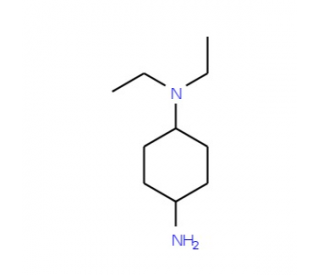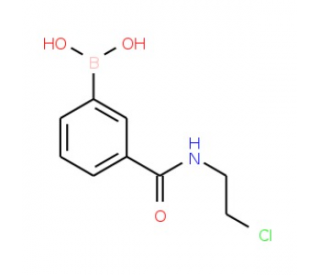详细说明
Purity
>95%, by SDS-PAGE under reducing conditions and visualized by silver stain
Endotoxin Level
<0.01 EU per 1 μg of the protein by the LAL method.
Activity
Measured in a cell proliferation assay using MC/9‑2 mouse mast cells. Martin, F.H. et al. (1990) Cell 63:203.
The ED50 for this effect is 1-5 ng/mL.
Source
E. coli-derived Gln26-Ala189, with an N-terminal Met
Accession #
N-terminal Sequence
AnalysisMet
Predicted Molecular Mass
18.5 kDa (monomer)
SDS-PAGE
18 kDa, reducing conditions
Carrier Free
What does CF mean?
CF stands for Carrier Free (CF). We typically add Bovine Serum Albumin (BSA) as a carrier protein to our recombinant proteins. Adding a carrier protein enhances protein stability, increases shelf-life, and allows the recombinant protein to be stored at a more dilute concentration. The carrier free version does not contain BSA.
What formulation is right for me?
In general, we advise purchasing the recombinant protein with BSA for use in cell or tissue culture, or as an ELISA standard. In contrast, the carrier free protein is recommended for applications, in which the presence of BSA could interfere.
6998-SC/CF |
| 6998-SC |
Formulation Lyophilized from a 0.2 μm filtered solution in PBS. | Formulation Lyophilized from a 0.2 μm filtered solution in PBS with BSA as a carrier protein. | |
Reconstitution Reconstitute at 100 μg/mL in PBS. | Reconstitution Reconstitute at 100 μg/mL in PBS containing at least 0.1% human or bovine serum albumin. | |
Shipping The product is shipped at ambient temperature. Upon receipt, store it immediately at the temperature recommended below. | Shipping The product is shipped at ambient temperature. Upon receipt, store it immediately at the temperature recommended below. | |
Stability & Storage: Use a manual defrost freezer and avoid repeated freeze-thaw cycles.
| Stability & Storage: Use a manual defrost freezer and avoid repeated freeze-thaw cycles.
|
Background: SCF/c-kit Ligand
Stem cell factor (SCF), also known as c‑kit ligand (KL), mast cell growth factor (MGF), and steel factor (SLF), is a widely expressed 28 ‑ 40 kDa type I transmembrane glycoprotein (1). It promotes the survival, differentiation, and mobilization of multiple cell types including myeloid, erythroid, megakaryocytic, lymphoid, germ cell, and melanocyte progenitors (1 ‑ 7). SCF is a primary growth and activation factor for mast cells and eosinophils (8). Mature rat SCF consists of a 189 amino acid (aa) extracellular domain (ECD), a 23 aa transmembrane segment, and a 36 aa cytoplasmic tail (9). The ECD shows both N‑linked and O‑linked glycosylation (10). Proteolytic cleavage at two alternate sites in the extracellular juxtamembrane region releases a 25 kDa soluble molecule which is comparable to the only form produced by Steel‑dickie mutant mice (11, 12). An alternatively spliced isoform of rat SCF lacks 28 aa that encompasses the primary proteolytic recognition site. Within aa 26 ‑ 189 of the ECD (corresponding to this recombinant protein), rat SCF shares 79% and 94% aa sequence identity with human and mouse SCF. Rat SCF is active on mouse and human cells, but human SCF is only weakly active on mouse cells (9). Noncovalent dimers of transmembrane or soluble SCF interact with the receptor tyrosine kinase SCF R/c‑kit to trigger receptor dimerization and signaling (13). SCF assists in the recovery of cardiac function following myocardial infarction by increasing the number of cardiomyocytes and vascular channels (14). In combinantion with G‑CSF, SCF can also reduce the accumulation of beta ‑amyloid deposits in a mouse model of Alzheimer’s disease (15).
References:
Ashman, L.K. (1999) Int. J. Biochem. Cell Biol. 31:1037.
Sette, C. et al. (2000) Int. J. Dev. Biol. 44:599.
Yoshida, H. et al. (2001) J. Invest. Dermatol. Symp. Proc. 6:1.
Erlandsson, A. et al. (2004) Exp. Cell Res. 301:201.
Kapur, R. et al. (2002) Blood 100:1287.
Wang, C.-H. et al. (2007) Arterioscler. Thromb. Vasc. Biol. 27:540.
Bashamboo, A. et al. (2006) J. Cell Sci. 119:3039.
Reber, L. et al. (2006) Eur. J. Pharmacol. 533:327.
Martin, F.H. et al. (1990) Cell 63:203.
Arakawa, T. et al. (1991) J. Biol. Chem. 266:18942.
Majumdar, M.K. et al. (1994) J. Biol. Chem. 269:1237.
Brannan, C.I. et al. (1991) Proc. Natl. Acad. Sci. 88:4671.
Lemmon, M.A. et al. (1997) J. Biol. Chem. 272:6311.
Kanellakis, P. et al. (2006) Cardiovasc. Res. 70:117.
Li, B. et al. (2011) Alzheimers Res. Ther. 3:8.
Long Name:
Stem Cell Factor
Entrez Gene IDs:
4254 (Human); 17311 (Mouse); 60427 (Rat); 403507 (Canine); 493937 (Feline)
Alternate Names:
c-kit Ligand; DKFZp686F2250; familial progressive hyperpigmentation 2; FPH2; KIT ligand; Kitl; KITLG; KL-1; Mast cell growth factor; MGF; MGFSHEP7; SCF; SCFStem cell factor; SFc-Kit ligand; SLF; steel factor










 粤公网安备44196802000105号
粤公网安备44196802000105号